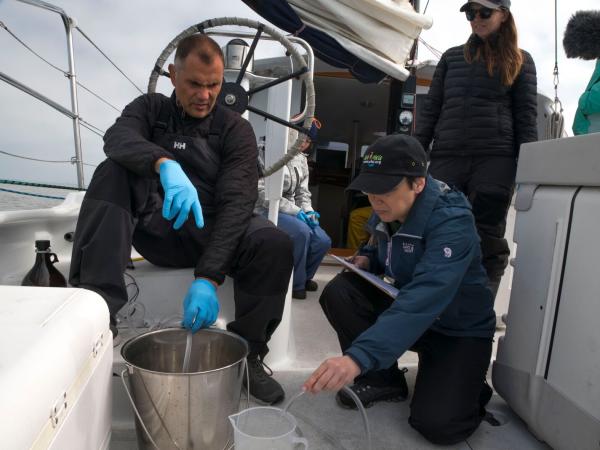Microplastic contamination in the San Francisco Bay, California, USA
2016. Microplastic contamination in the San Francisco Bay, California, USA. Marine Pollution Bulletin 109 . SFEI Contribution No. 769.
Despite widespread detection of microplastic pollution in marine environments, data describing microplastic abundance in urban estuaries and microplastic discharge via treated municipal wastewater are limited. This study presents information on abundance, distribution, and composition of microplastic at nine sites in San Francisco Bay, California, USA. Also presented are characterizations of microplastic in final effluent from eight wastewater treatment plants, employing varying treatment technologies, that discharge to the Bay. With an average microplastic abundance of 700,000 particles/km2, Bay surface water appears to have higher microplastic levels than other urban waterbodies sampled in North America. Moreover, treated wastewater from facilities that discharge into the Bay contains considerable microplastic contamination. Facilities employing tertiary filtration did not show lower levels of contamination than those using secondary treatment. As textile-derived fibers were more abundant in wastewater, higher levels of fragments in surface water suggest additional pathways of microplastic pollution, such as stormwater runoff.
Related Projects, News, and Events:
 Microplastic Pollution (Project)
Microplastic Pollution (Project)
The RMP has conducted initial studies of microplastic pollution in San Francisco Bay. Findings from a 2015 screening-level RMP study of microplastic pollution in our Bay show widespread contamination at levels greater than other U.S. water bodies with high levels of urban development, the Great Lakes and Chesapeake Bay. Wildlife consume microplastic particles; ingestion can lead to physical harm, and can expose aquatic organisms to pollutants like PCBs that the plastics have absorbed from the surrounding environment.
 New Microplastic Pollution Study to Launch in San Francisco Bay and Adjacent Ocean Waters (News)
New Microplastic Pollution Study to Launch in San Francisco Bay and Adjacent Ocean Waters (News)
A two-year investigation on microplastic and nanoplastic pollution in San Francisco Bay and the surrounding ocean will launch this month, led by two research centers, the San Francisco Estuary Institute and the 5 Gyres Institute.
 Microplastic Pollution in San Francisco Bay (Project)
Microplastic Pollution in San Francisco Bay (Project)
Plastic pollution is gaining global recognition as a threat to the resilience and productivity of ocean ecosystems. However, we are only just beginning to understand the scope and impacts of microplastic particles (less than 5 mm) on coastal and ocean resources, and the San Francisco Bay Area is no exception. A preliminary study of nine water sites in San Francisco Bay, published in 2016, showed greater levels of microplastics than the Great Lakes or Chesapeake Bay.
